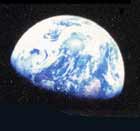|
Shifting zones and seasons
Climatic zones are shifting: poleward (northward in the northern
hemisphere) and up the slopes of mountains. Average annual temperatures
are moving northward (in the northern hemisphere) at a rate of 4
kilometers a year — 20 times faster than temperatures shifted
during the onset and retreat of the last Ice Age.
In early 2010 it
was discovered that some of the sea lions of the Galápagos islands
(near the equator) had for the first time moved away, 900 miles
southeast to an island off the coast of Peru. The average temperature
of the water around the Galápagos had risen over ten years from
17 C to 23 C, so the sea lions had moved to the nearest environment
they could find where the water was at the temperature they had
been used to.
Species from continental
Europe are moving north. There is a long list of these species that
have recently appeared for the first time in Britain, some now as
far north as Iceland: for instance damselfly and butterfly species,
hummingbird hawk moth, violet carpenter bee, brown-banded carder
bee, tree bumblebee, little egret, cattle egret, purple heron, and
many so unfamiliar that they do not have English names. The spread
of Asian hornets (which massacre honeybees) north from France to
England will probably be hastened by warmer temperatures.
Populations of British
seabirds have declined because they rely on sand eels, which have
moved north out of British waters. According to the Royal Society
for the Protection of Birds, “Warming of the sea by just one
degree Celsius allows warm water plankton to move in and replace
the more nutritious cold water plankton that provide food for the
sprats and sandeels that seabirds need.”
When I was gardening
in South Carolina, I learned that the growing season had become
longer than was mentioned in books: the dates of last frost in the
spring were earlier, and first frost in the fall later, and this
kept becoming more so in my experience. It was not yet recognized
that this was part of a general phenomenon called global warming.
In Britain, according to experts at the Royal Botanical Gardens
in Kew, the dates in spring when plants start to flower have over
the past 30 years been getting dramatically earlier (with exceptions
after cold winters such as that of 2009/2010). This might seem fine,
except that it points toward a possible future in which Britain
has the climate of the Mediterranean and South Carolina that of
Florida, while the Mediterranean and Florida become desertic.
Regions with hotter
and drier climates are becoming larger. These include the regions
with Mediterranean-type climate (cool moist winters, warm dry summers)
and deserts like the Sahara.
Regions of grassland
in many parts of the world are being invaded by woody shrubs, which
are favored when there is more carbon dioxide in the air. This is
already having a great effect on the livelihood of people dependent
on rangelands, including in the U.S.
In 1944 the U.S.
navy made a set of detailed photos of northern Alaska. The rediscovery
of these photos, and their comparison with modern satellite images,
has shown that the tundra all across Alaska, also Siberia and Canada,
is becoming covered by shrubs. The zone of boreal forest south of
it is advancing northward, but is at the same time “browning”
and dying, progressively from its southern edge. This is because
of increased warmth accompanied by drying; the warmth also leads
to increased insect infestations and increased frequency and size
of forest fires.
In Britain, spring
is arriving more than two weeks earlier than in the 1980s, 3 weeks
earlier than in the 1950s might seem pleasant, but migrant birds
arriving at their usual times 'find the food their young depend
on has already bred/pupated/hatched/or gone to ground; and plants
flower before their pollinators are on the wing.
In the Arctic Ocean
every summer there is a blooming of phytoplankton, which are the
base of the food chain. This blooming used to peak in September,
but now because of the shrinking of the ice cover it has moved as
much as 50 days earlier, to early July. This was discovered in satellite
data from 1997 to 2009 (and published in the journal Global Change
Biology in 2011). Biologists fer that such a massive change
in such a short time could unravel the region's ecosystem and “lead
to crashes of the food web.
return
|

